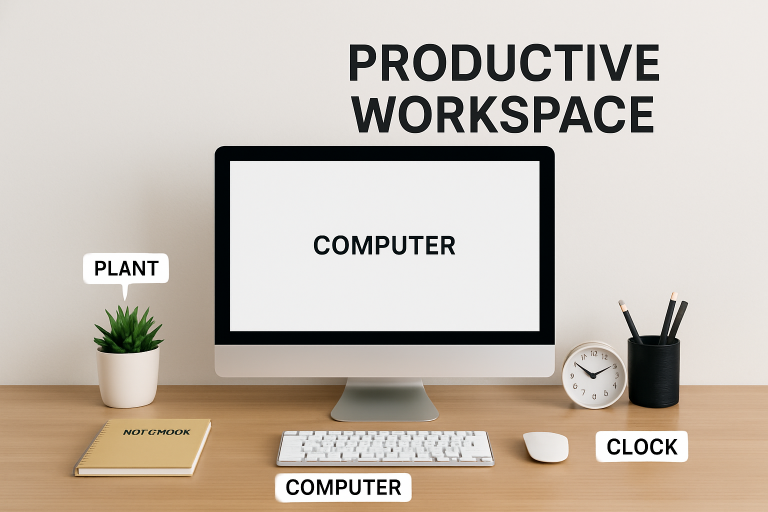News
Transform Your Workspace: Essential Office Cleaning Strategies for Productivity

Introduction
Maintaining a clean and organized office is not just a matter of visual appeal—it’s a foundational strategy for enhancing productivity, health, and morale within any workplace. Employees who operate in neat, well-kept environments report greater satisfaction and focus, attributes that can lead to stronger organizational performance. Leveraging expert office cleaning services right from the start helps ensure that your cleaning protocols match industry standards and foster a culture of efficiency and well-being.
Notably, a tidy office can reduce workplace stress and amp up enthusiasm among your personnel.
Declutter and Organize
Begin your office transformation by minimizing clutter across all visible and hidden spaces. Unused office supplies, outdated paperwork, and excess personal items can quickly accumulate, making surfaces chaotic and distracting. Take a systematic approach to decluttering: categorize items, assess their necessity, and either store, discard, or donate as appropriate. Once workspaces are decluttered, invest in simple organizational tools like drawer dividers, trays, and desk organizers to maintain order over the long term.
Frequent organization empowers every employee to work more purposefully. When everything has a place and is easy to locate, daily tasks become streamlined, reducing wasted time and mental clutter. Even shared areas—such as kitchens, meeting rooms, and supply closets—benefit from designated storage solutions and routine checks.

Implement a Cleaning Schedule
Consistency is critical to sustaining a clean and inviting office. Implement a thorough cleaning schedule that outlines daily, weekly, and monthly tasks to address both immediate and long-term needs. Daily tasks should include wiping down work surfaces, sanitizing frequently touched areas, disposing of trash, and maintaining common areas. Weekly chores might involve vacuuming carpets, emptying refrigerators, and cleaning glass, while monthly deep-cleans should target less obvious locations, such as light fixtures, behind furniture, and under desks.
According to Business.com, using strategies such as a shared calendar or digital reminders can help employees stay on track and accountable. A cleaning schedule also ensures that essential maintenance is never overlooked, thereby preserving the professional appearance of your office and maintaining its hygiene standards.
Focus on High-Touch Areas
Some of the most germ-prone surfaces in any office are those shared or touched by many people daily—think doorknobs, elevator buttons, telephones, desktops, keyboards, and communal kitchen appliances. Regularly disinfecting these high-touch points is pivotal for controlling exposure to viruses, bacteria, and allergens. Not only does this minimize sick days and protect sensitive team members, but it also supports a culture of care and accountability in the office.
Prioritizing the cleaning and disinfection of shared surfaces is essential for controlling the spread of communicable illnesses within workplace settings. Simple interventions, such as providing disinfectant wipes and reinforcing proper hand hygiene, can have far-reaching positive effects.
Enhance Air Quality
Cleanliness isn’t just about surfaces. Air quality is equally essential to employee well-being and cognitive function. Dust, mold spores, and volatile organic compounds (VOCs) from office materials can degrade indoor air quality, exacerbating allergies and reducing overall well-being. Regularly cleaning air vents, scheduling HVAC maintenance, and using HEPA-filter air purifiers are vital to keep fresh air circulating throughout your workspace. Indoor plants can also act as natural air filters, removing toxins while improving the ambiance.
Poor air quality is closely linked to increased absenteeism and decreased job satisfaction. According to the EPA, creating healthier indoor environments is essential for supporting both physical health and workplace performance. Investing in cleaner air pays off in the form of greater employee comfort and sharper focus.
Encourage Personal Responsibility
A truly spotless office relies on shared effort. When each employee takes ownership of their workspace, the cumulative effect is transformative. Building a culture of cleanliness can start with gentle reminders, visible guidelines, or periodic clean-up initiatives. Encourage employees to tidy their desks at the end of each day, wipe spills immediately, and participate in communal tidying efforts during scheduled times.
Leadership plays a key role in setting the standard for personal responsibility. Recognizing teams and individuals who consistently maintain their spaces can inspire positive behaviors, embed responsibility into the office culture, and reduce the daily workload for cleaning staff.
Leverage Professional Cleaning Services
While regular daily and weekly maintenance is essential, periodic deep cleaning by professionals can address areas that standard routines may overlook. Professional teams are equipped with industry-grade products and expertise to thoroughly eliminate deeply embedded dirt and sanitize, thereby reducing allergy triggers and pathogen load. They also bring efficiency, safety, and a consistently high standard of cleanliness to your office environment without disrupting daily operations.
Scheduling professional cleanings quarterly or biannually ensures compliance with health regulations and helps preserve the longevity of office assets, such as carpets and upholstery, which can deteriorate with neglect.
Conclusion
Transforming your workspace begins with a commitment to ongoing cleanliness and collective participation. Implementing these strategies—from basic decluttering to leveraging expert cleaning support—offers a foundation for heightened productivity, healthier employees, and a robust workplace culture. A consistently clean office is an investment that pays dividends in engagement, morale, and long-term success.
